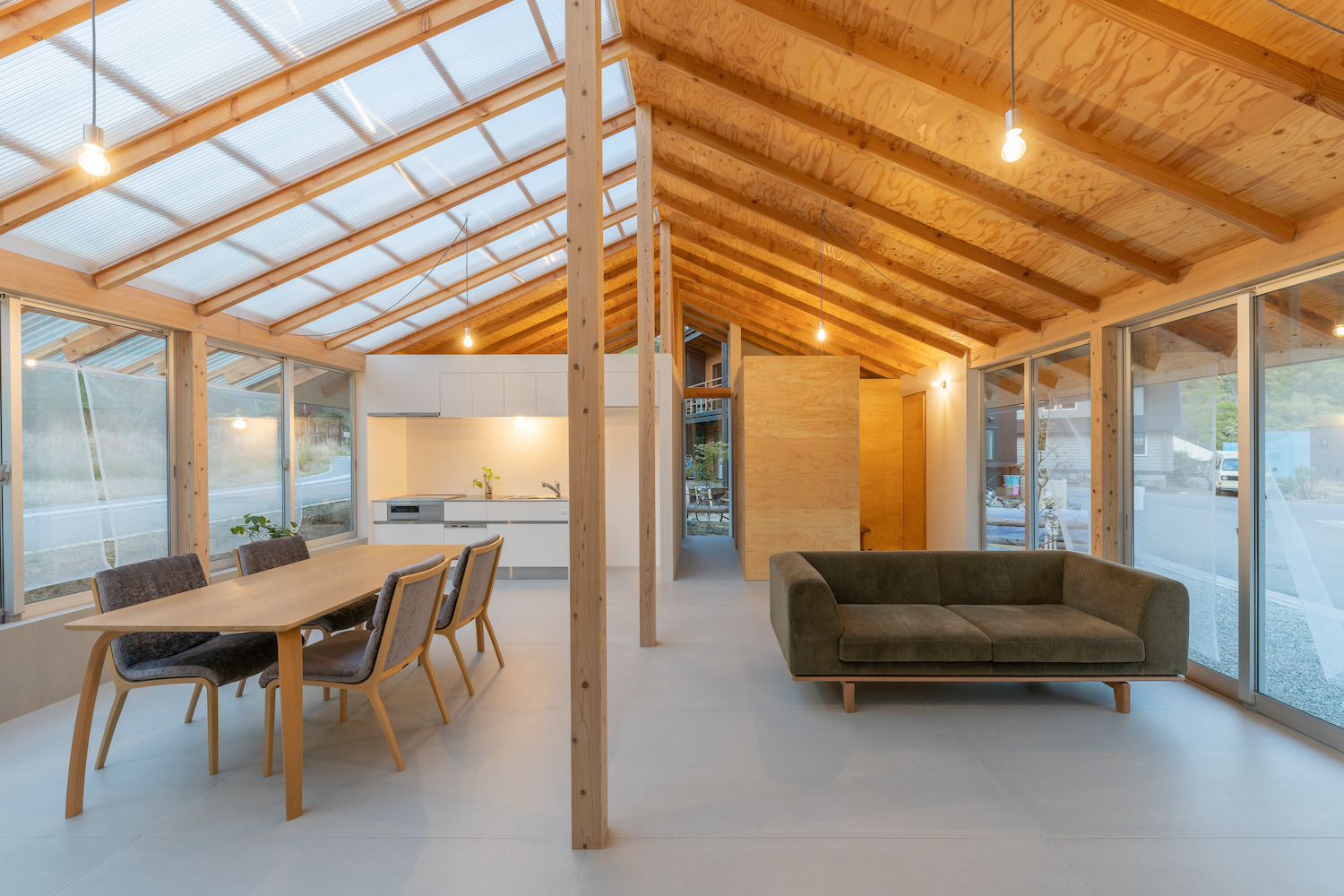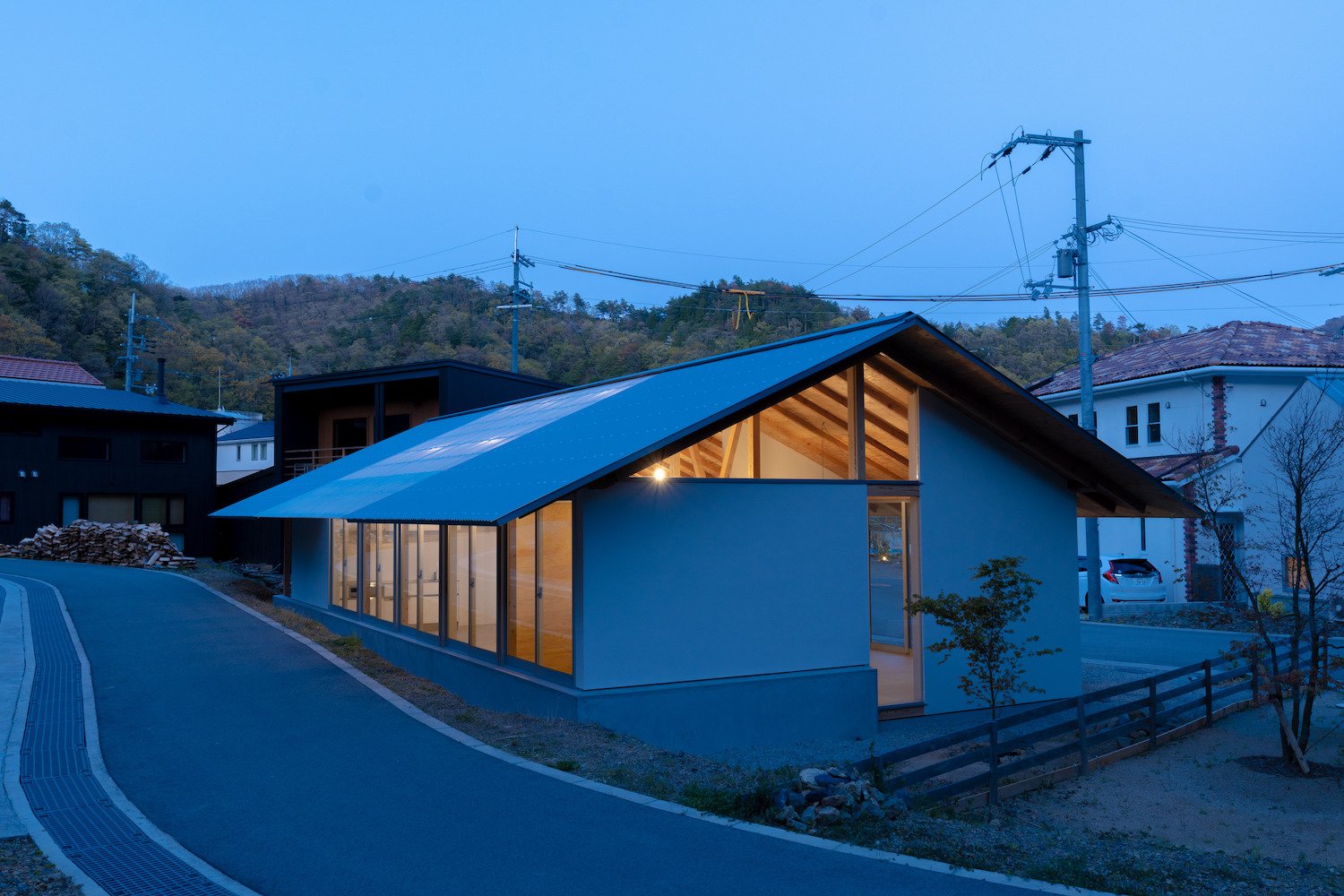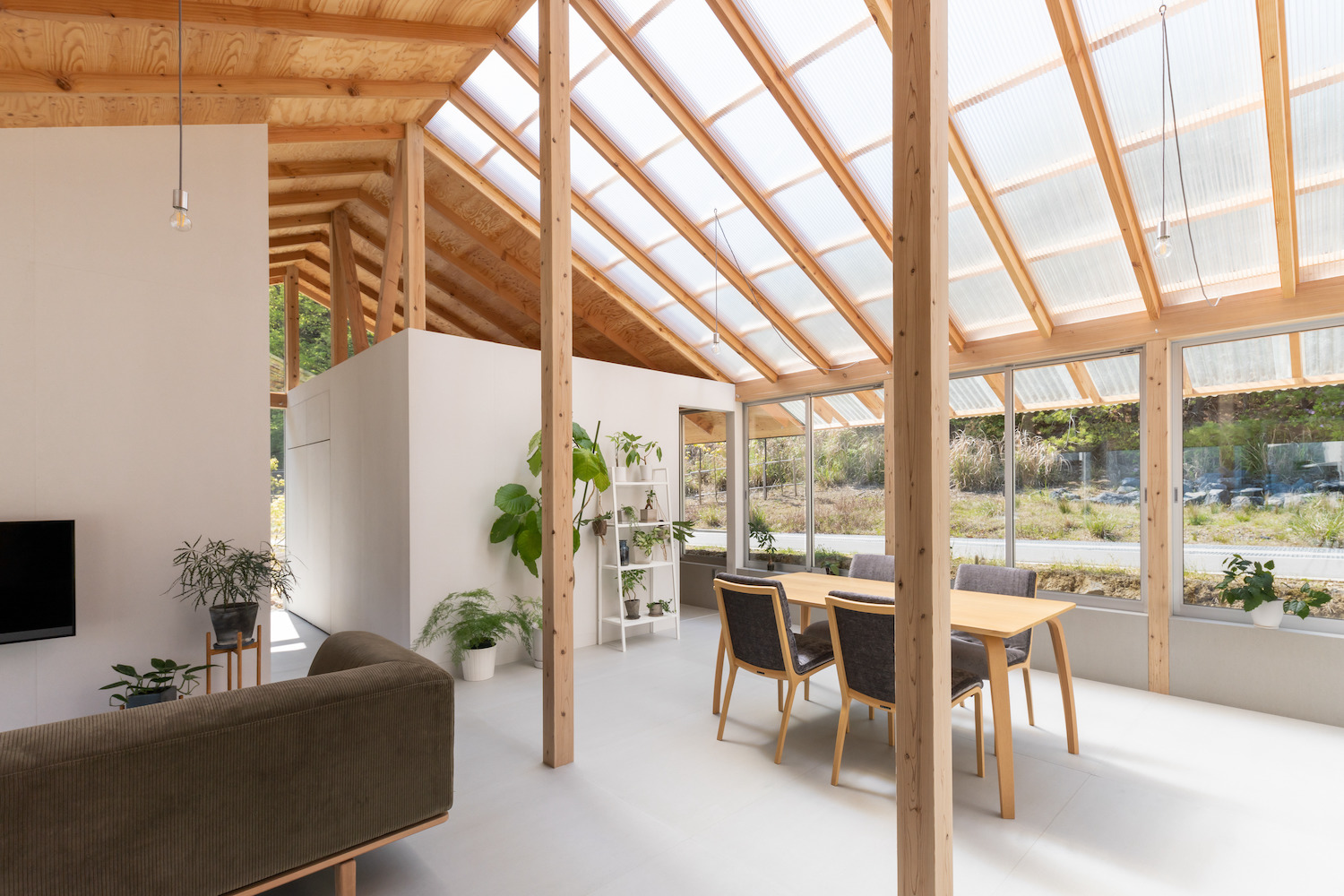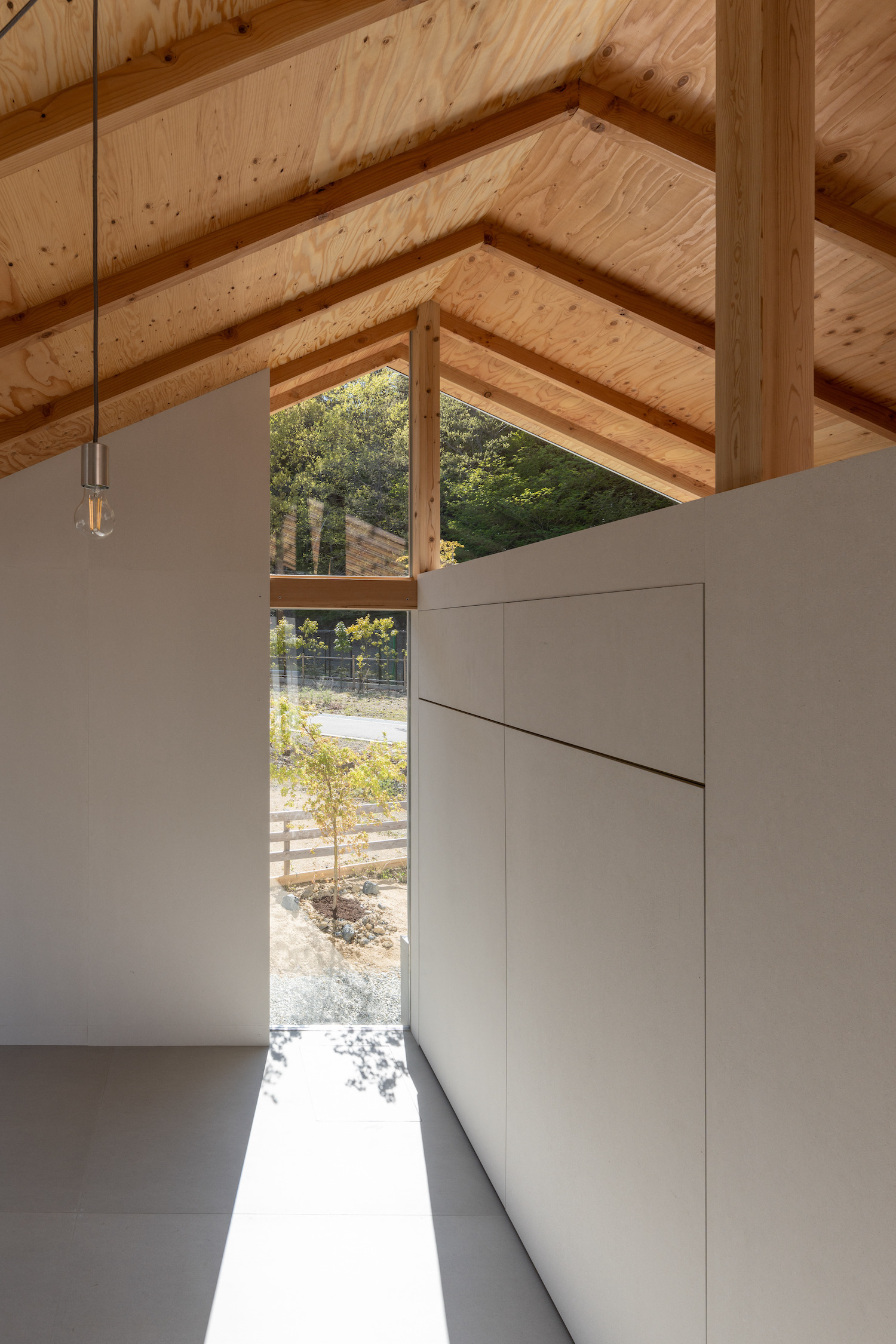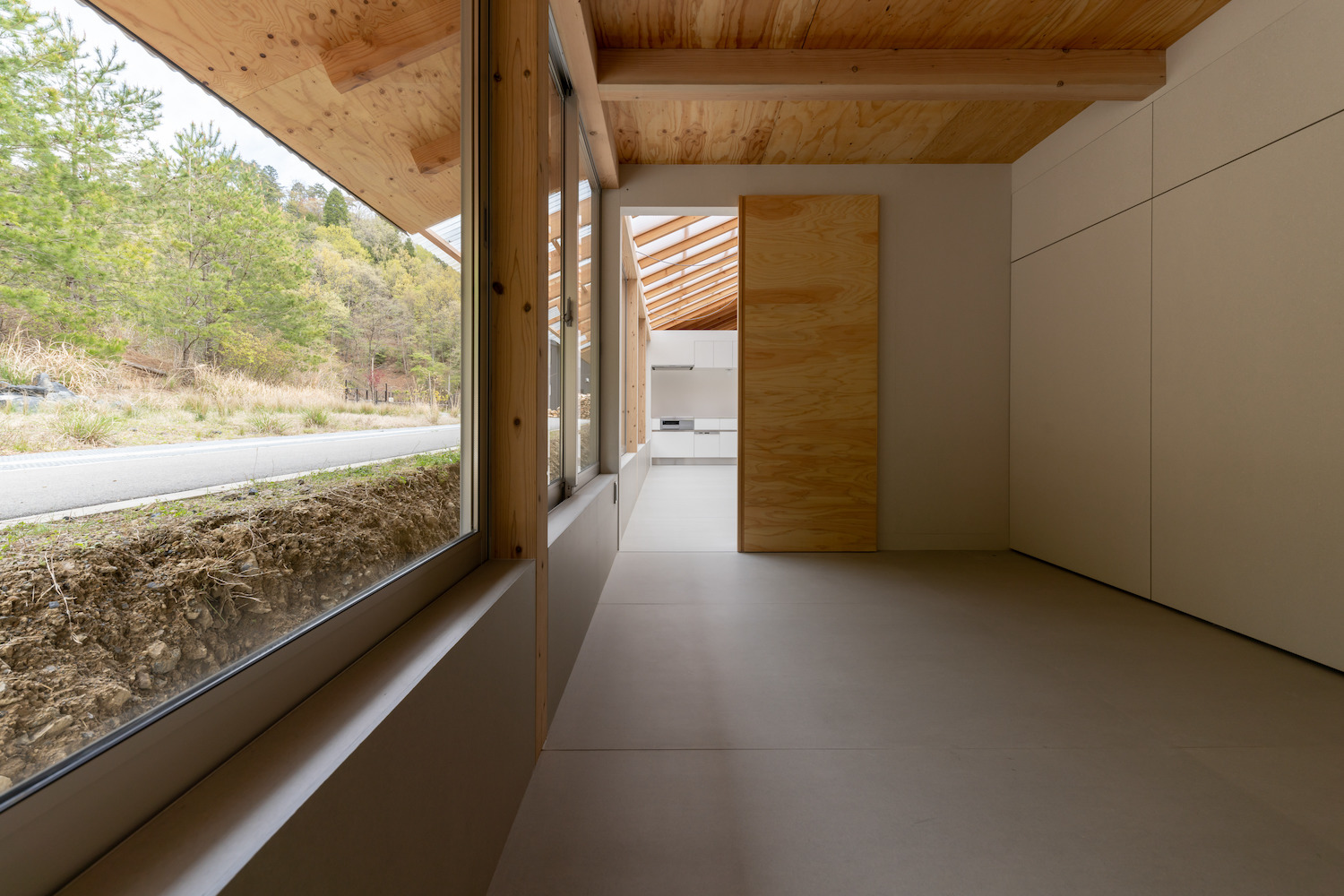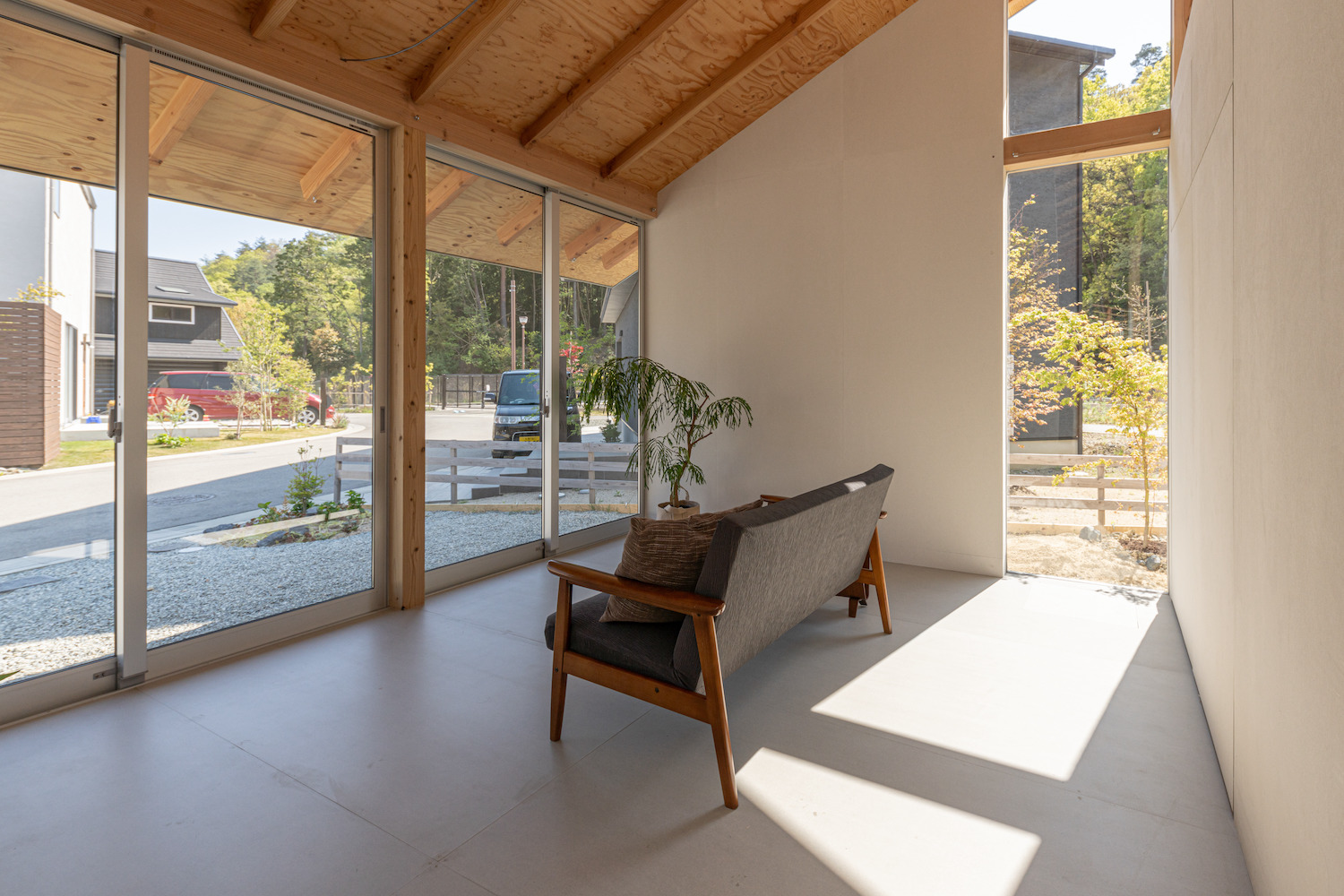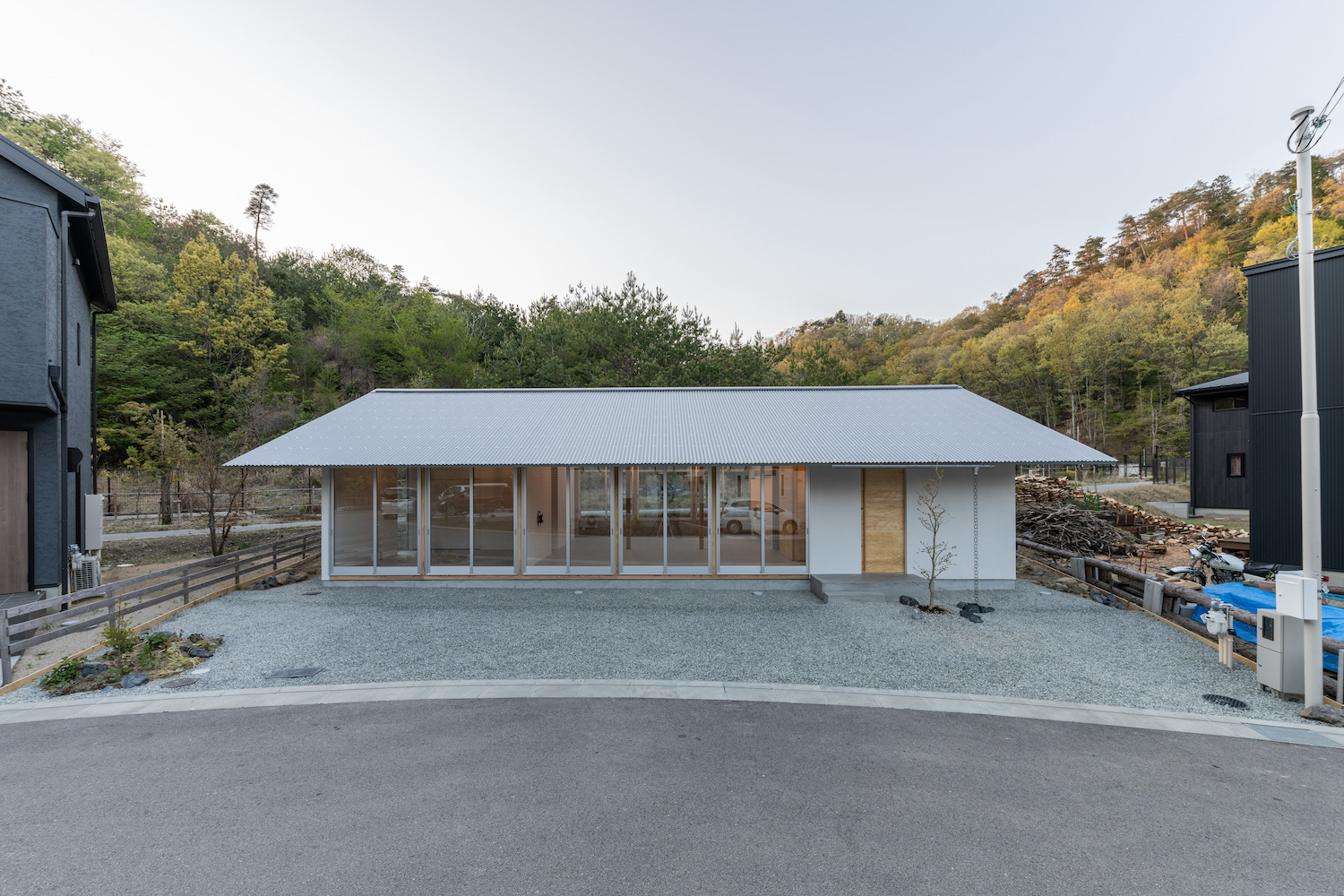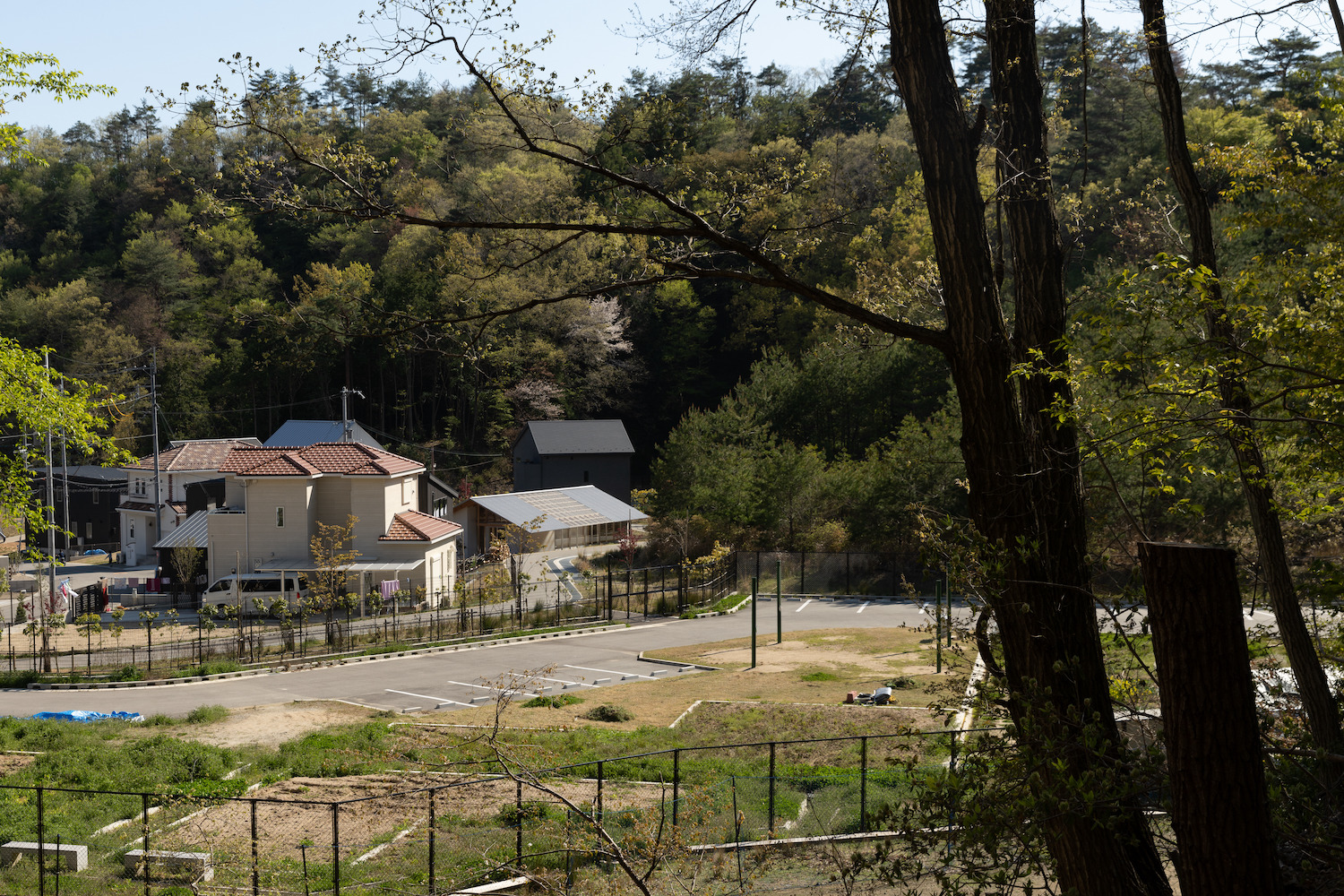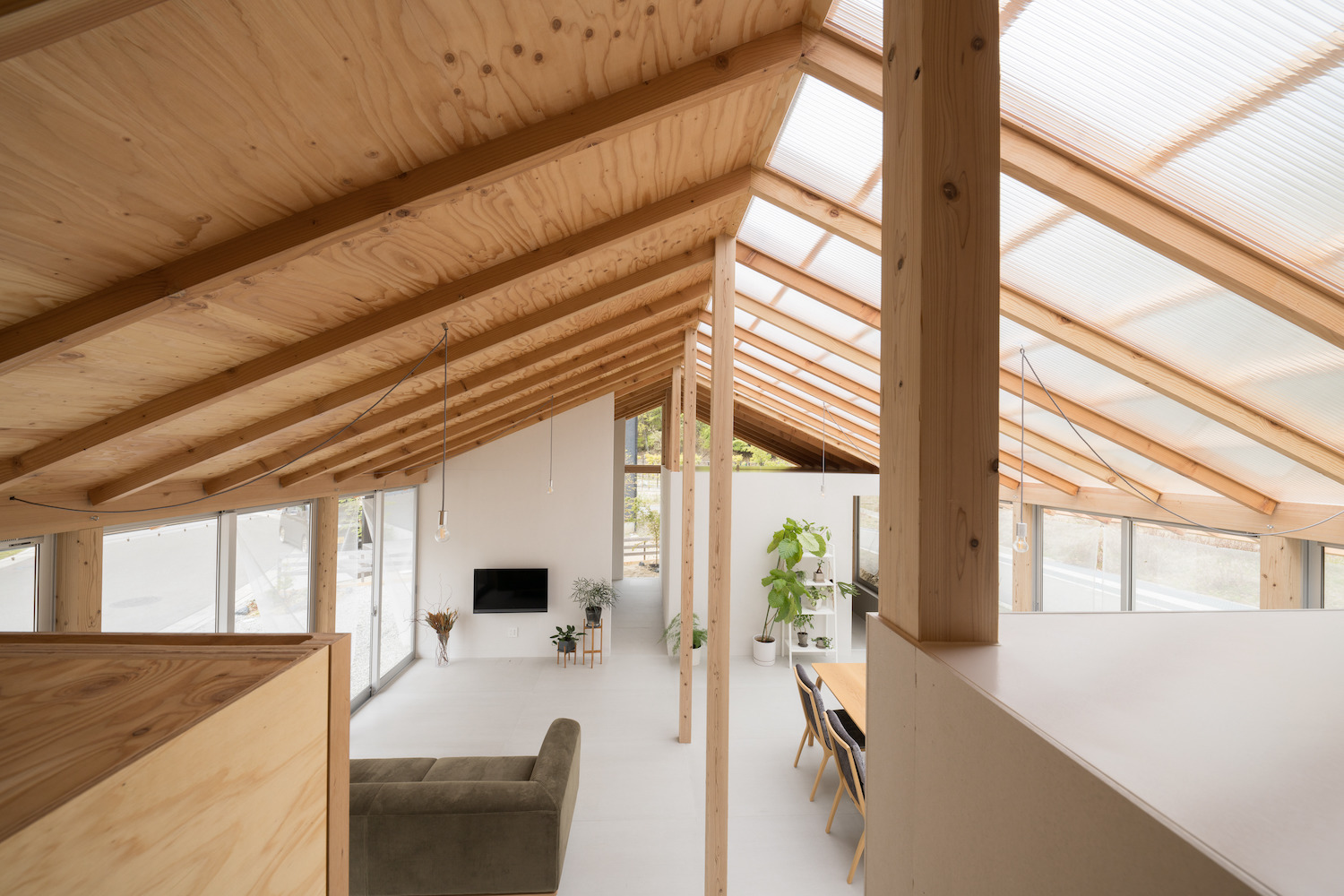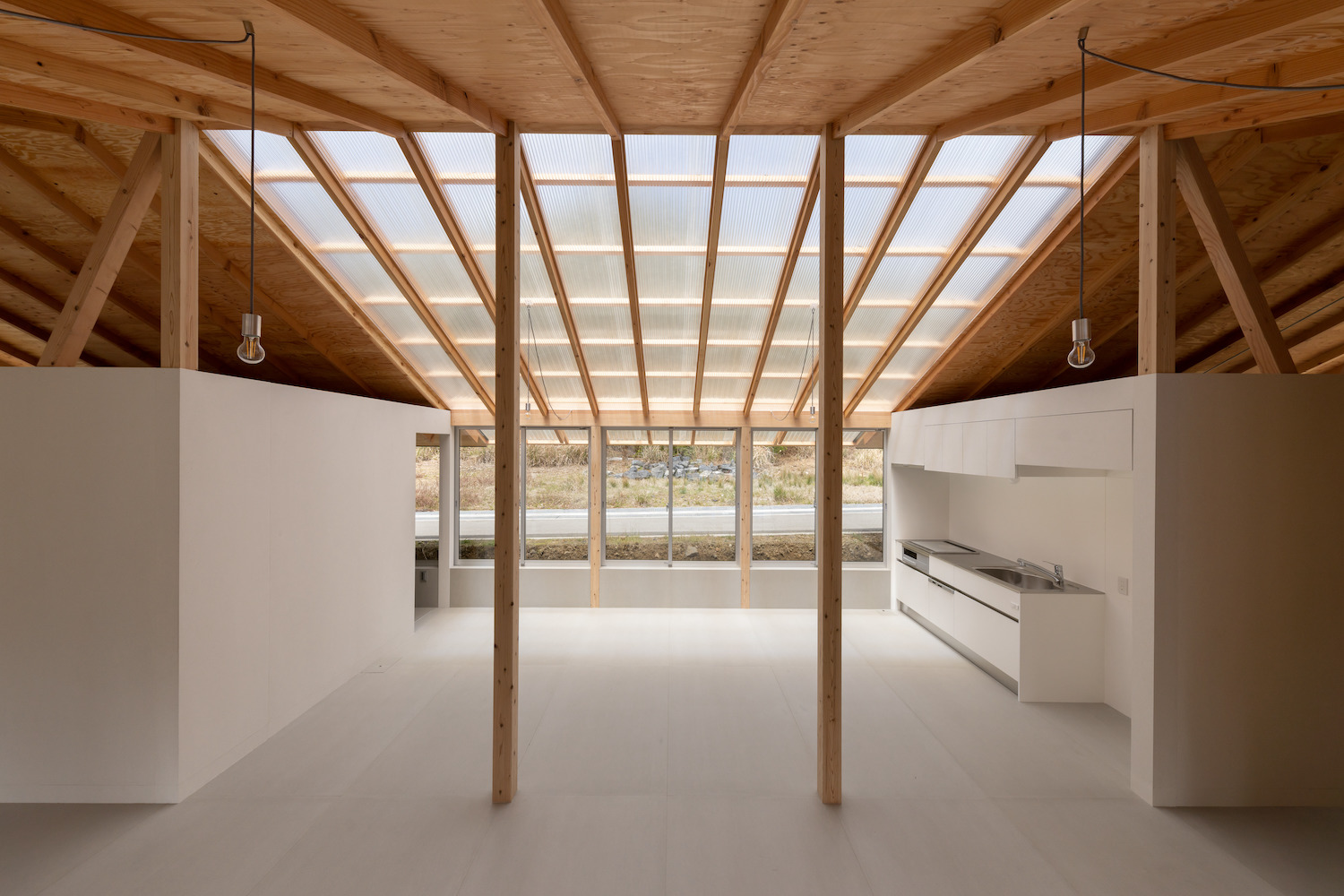House in Minohshinmachi is a minimal residence located in Osaka, Japan, designed by Yasuyuki Kitamura Architects. The planned site is located in the northernmost part of Minoh City, Osaka Prefecture, and the surrounding development area was blessed by a natural environment. However, many of the houses built in the surrounding area were not much different from those built in the city center. In this environment, the client couple wanted a simple house that would allow them to absorb the richness of nature in their daily life, unlike living in a house built in the city.
The south side of the site faces the road, and the east and west sides are flanked by residential lots. On the north side, the site faces the management road of Satoyama Farm, which was established as a buffer zone for the landslide disaster warning area. The background features the magnificent greenery of Mount Aogai, the northernmost mountain in Minoh City. In addressing this border between the ‘city’ and ‘nature’, a quiet residence with a vague boundary between interior and exterior, in harmony with the surrounding natural environment, was required.
The House is a one-story building with a simple, loosely gabled roof, and the volume is kept low so that it is loosely continuous with the surrounding landscape. Additionally, with a very limited construction budget, the structure was built using conventional wooden construction methods, with all pillars measuring 105mm square, and all of them constructed using ordinary structural metals. A simple symmetrical frame structure with columns spaced one pitch apart, a single longitudinal climbing beam inside and outside, and rafters with narrowed ends are used to ensure high seismic performance and to significantly reduce the construction period.
The interior space is extended by paired openings, a light roof, deep eaves, and large skylights that draw in the trees and blue sky. And by nesting the rooms, an intermediate area was created, blurring the interior and exterior of the building. Two pillars placed in the center of the large space, positioned as architectural components with a small cross section, provide the space with a sense of calm, like standing trees in a forest.
This single architectural gesture establishes the building’s style based on an honest use of materials and a balance between opacity and transparency. Inside the single-story home, which is divided by slender wooden beams, the kitchen, bath and other functions are contained by a number of nested rectilinear volumes, either white-washed or clad in plywood. Modern and solid, the structures provide a wonderful contrast against the classic, airy envelope. While seemingly light and ethereal, the house is highly earthquake-resistant, thanks to the traditional wooden construction method employed in its making. A new expression in a remarkable setting, the project shows that greatness can be achieved with modest means.
Photography by Masashige Akeda
